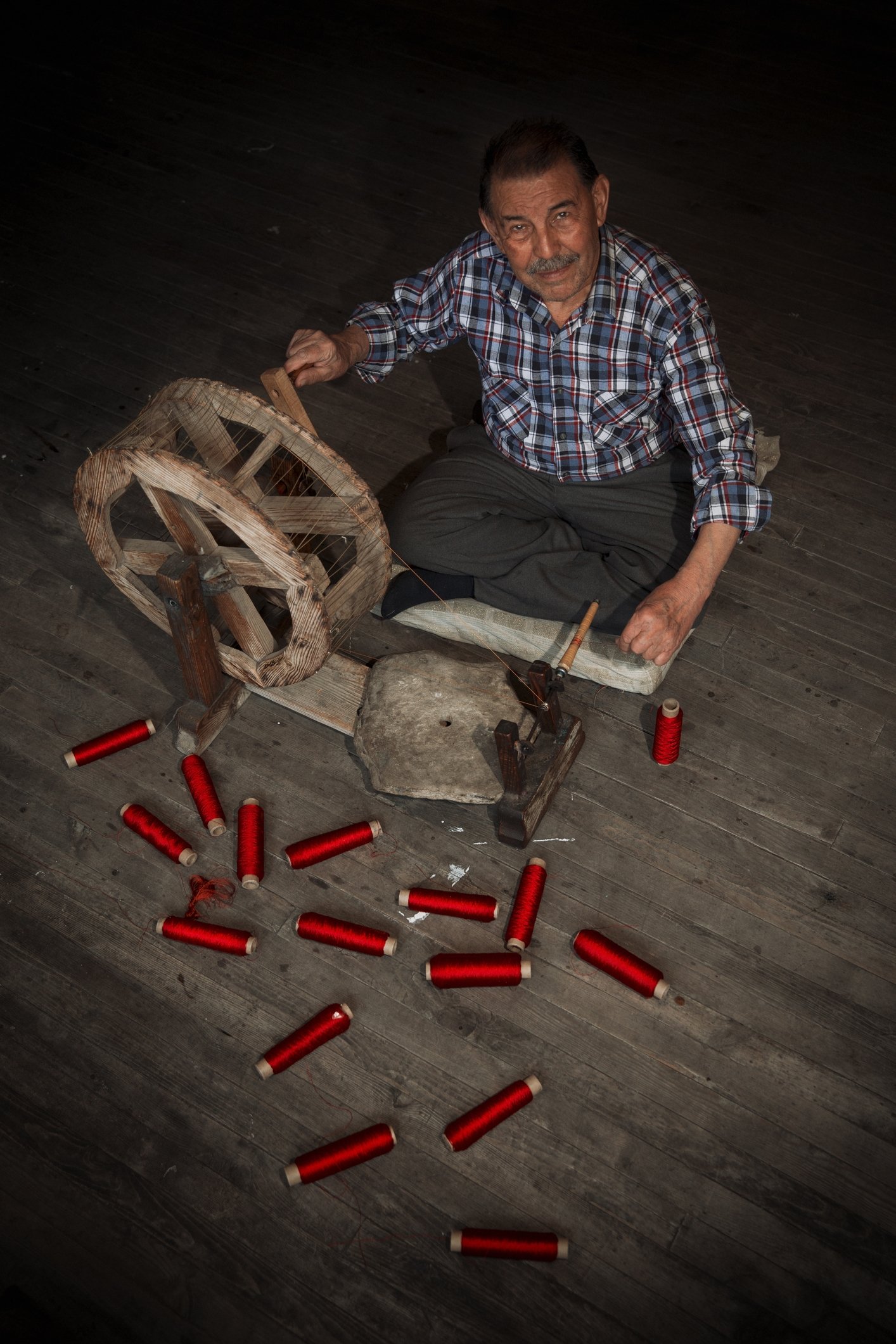History of Textile in Denizli
Textile in Denizli Since Antiquity In ancient times, the Menderes route was more important as a trade route. This road carries the trade volume from the interior to the port of Ephesus. In the later Byzantine period, it was used as a means of communication for the higher parts of the south. The road from Ephesus reaches Hierapolis (Pamukkale) over the Menderes river. The road that turns south (from the direction of Çal district) reaches the Lycos valley. This road was widely used for those traveling east from Ephesus during the Christian era.
Hierapolis in the Lycos Valley, A.D. 2nd-3rd Century, It experienced a golden age in terms of development in the 2nd-3rd centuries. The fabrics woven in the city were exported to Italy (Photo 1 – 2), and the coins of the union were minted by maintaining a close commercial relationship with the Western Anatolian cities (Ephesus, Bergama, Smyrna, Sardes, Aphrodisias, etc.). In terms of producing and dyeing textile products and weaving carpets, Hierapolis looks like a factory city of the ancient period. This production was made together with other Lycos Valley cities, Laodikeia and Colossai.

Detail of the Greek inscription from the Mausoleum of the merchant Flavia Zeuxis (1st century AD). Here, Flavia Zeuxis tells that she took the weaving products (Carpets, Rugs, Fabrics, etc.) produced in Hierapolis to the port of Ephesus and shipped them to the Mediterranean basin countries by ships, and that she traveled around the Malia cape in Italy 72 times during these travels.
It was very difficult for Christianity to spread in Laodikeia, the textile giant of the ancient world. The reason for this is the wealth of the city through trade and textiles. The wealthy and wealthy people did not show much interest in the new religion at first. Especially the wealth of the Polemos Dynasty was legendary throughout the ancient world.
The greatest source of this wealth is a kind of raven-colored sheep raised in Laodikeia and the woven products obtained from their wool. The ancient geographer Strabo (XII/VII-16) writes that a kind of sheep with a raven black color and very soft wool was bred in Laodikeia, the wool of these sheep was even superior to those of the sheep bred in Miletos (Balat), thus the people of Laodicea earned great income. .

The ancient writer Vitruvius (VIII/III-14) attributed the softness of the wool of the sheep to the rotten smelling water of the region they drink. The tunics woven in Laodikeia and known as Trimitia were so famous that the city was called “Trimitaria” for a while. The most beautiful textile products of the ancient period were woven in the Lycos (Çürüksu) valley. Weaving products even surpassed Miletos (Balat). B.C. Textile products woven here in the 4th century were collected in Sardes (Salihli) and distributed from there. In ancient times, the cities of Caria and Lydia competed with Laodikeia, Colossai and Hierapolis in the textile industry. Washing and dyeing wool has become an important sector in the Lycos valley. Fabricated textile production is the most important of the industries in Ionia, Lydia and Phrygia in the ancient geography. All of Miletos, an Ionian port city, Hermos (Gediz) and the cities lying in the Menderes basin, Sardes (Salihli), Thyateira (Akhisar) in Lydia, Colossai, Hierapolis and Laodikeia in Phrygia are economically connected to the Aegean port cities.
The wool of the sheep bred in Miletos in the classical period gained an important and privileged reputation in the ancient world with its quality and softness. In the 4th-3rd century BC, weaving products made of Miletos wool were a symbol of privilege and quality. B.C. In the early 4th century, the sale of non-standard second quality wool was prohibited by a law in Erythrae (Ildiri). And at the end of this century, the wools taken from Miletos were fabricated in Theos (Sigacik) to make cloaks and overcoats. Sardes and Thyateira (Akhisar) in the Lydian cities gained a great reputation in textile production. The illustrated wall coverings and dresses woven here were known to the Romans as Attalic. According to some ancient sources, this name is a brand name given to fabricated products produced and used for the Pergamon royal palace. Ionian and Lydian cities are in competition with the Lycos valley cities of Hierapolis, Laodikeia and Colossi in the textile industry. Shiny black wool produced in Laodikeia, especially soft
Denizli dokuması
The province of Denizli has a legacy of weaving pure cotton fabrics that spans back nearly 4,000 years as the recent archaeological uncovering of a textile factory has proven. Coincidently; the province’s most famous natural site is referred to in Turkish as Pamukkale, which translates to “Cotton Castle.”
While the site, which consists of visually spectacular mineral-laden thermal travertine terraces, does not directly correlate to cotton fabric per se, the neighboring ancient Roman spa city of Hierapolis dating back to the second century B.C. coupled with the fact that the area was known to boast superior weavers as mentioned by 14th-century Muslim traveler Ibn Batuta can attest to what could be considered the ultimate bathing textiles in the world.
A Turkish man weaves cotton on a traditional loom in Denizli, Turkey, May 1, 2016. (iStock Photo)
Woven out of thick cotton yarn, the peshtamels and towels traditionally used in the Turkish bathing ceremony are all examples of “Denizli dokuması” (the Denizli weave). These fabrics are known for being moisture absorbent and breathable and come in an array of colors obtained from natural dying methods using walnut leaves, onion skins, sumac and acorns as well as many other herbal, root and plant sources.
Reference.1

